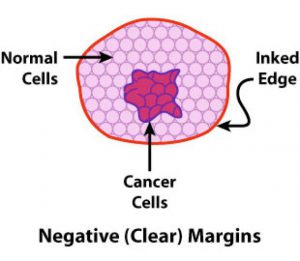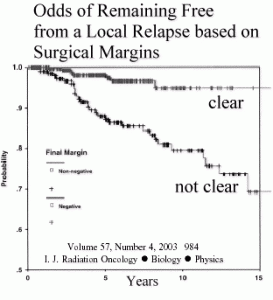
mTuitive is always working with customers to increase the power of the synoptic data being captured. The structured reports from pathology and surgery reports have been used to comply with various standards from College of American Pathologists (CAP) and Canadian Partnership Against Cancer (CPAC) and other international organizations, while also providing discrete elements to see how individuals and facilities are performing with certain initiatives and best practices. Recently, customers have come forward at multiple locations for an initiative that marries the worlds of pathology and surgery in an exciting way that could mean better results for patients.
Using information pulled from xPert for Pathology/CAP eFRM, mTuitive is able to provide feedback on what surgeons are doing and how they can better conform to recommendations to promote improved outcomes for patients. In cancer surgery, specifically breast cancer, there is a recommendation based on studies (such as this one) that surgeons have a 2-mm clear margins when removing tumors in ductal carcinoma in situ (DCIS) cases. By ensuring the proper margin size, physicians can greatly reduce the risk of recurrence of DCIS in their patients. But with all of the surgeries being performed and all of the specimens going out to various pathology labs and different pathologists, how can healthcare personnel know if surgeons are following these guidelines? That's where structured data comes in.

In xPert for Pathology/CAP eFRM, based on the electronic Cancer Checklists (eCCs) published by CAP, there are fields asking pathologists about margins of the tumor. By answering this section, pathologists are able to create the necessary data that can now be tied back in to the surgical case via information in mTuitive OpNote. mTuitive is able to combine personnel information on the appointment/procedure with the specimen information and create usable data that can be graphically displayed or utilized in all manner of ways. This enables management and provincial members to track how all surgeons are doing in their DCIS cases in regards to this best practice. It doesn't matter at which hospital the surgery occurred, or which surgeon performed it, all of the data is being collected and presented in an easy to read manner that ties together two departments.
Even though surgery and pathology are very closely linked, they tend to be worlds apart when it comes to communication and their technological infrastructure. Surgeons have their EHRs and perioperative systems and postoperative reports, while pathologists deal with their LIS specific to their labs. But by overcoming the barriers, and by actually using the information captured to communicate efficacy between the two departments, mTuitive is able to help physicians promote better outcomes for their patients. Now those with DCIS can rest assured that they are receiving the appropriate care that will minimize the chance of recurrence, thanks to the power of structured data.